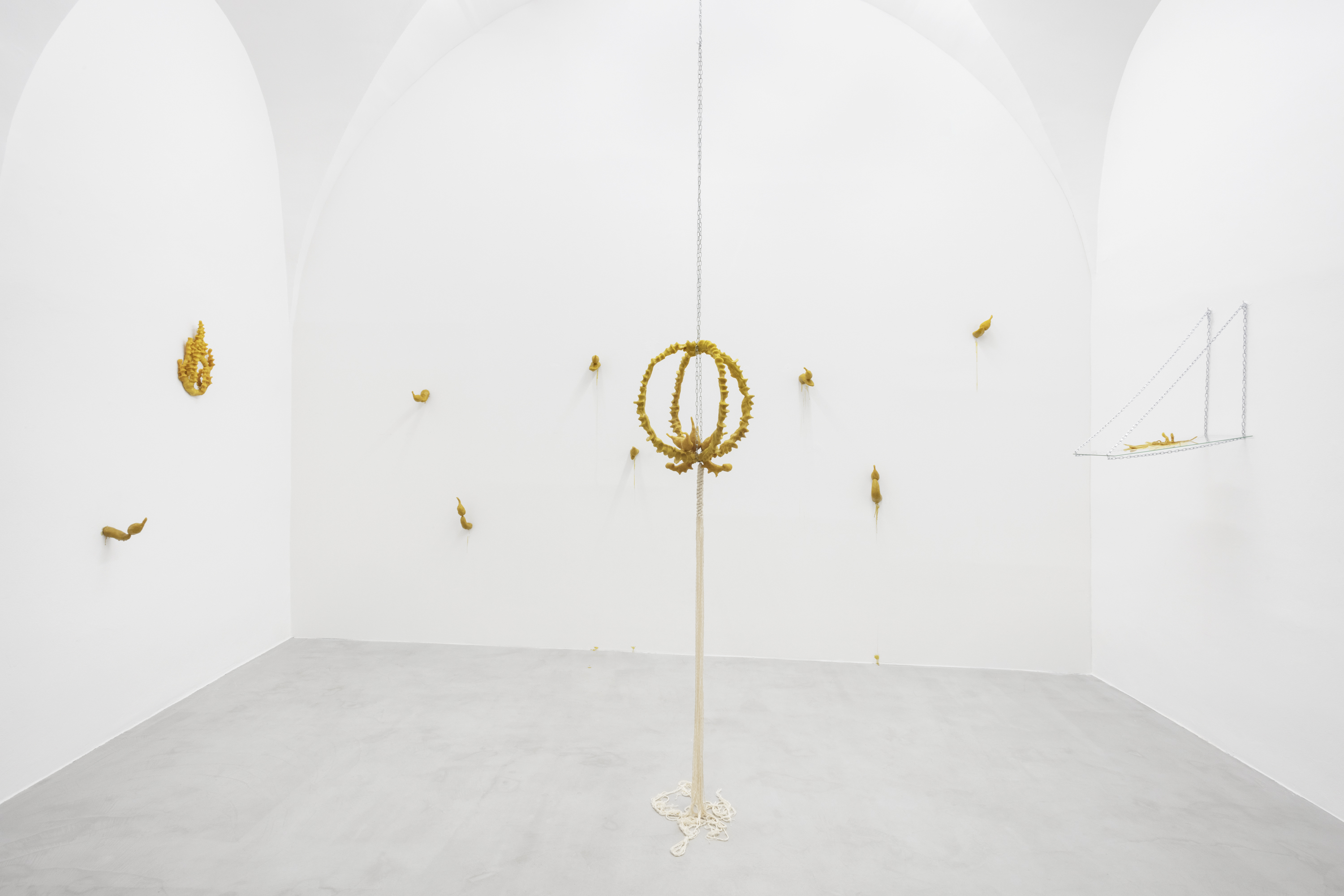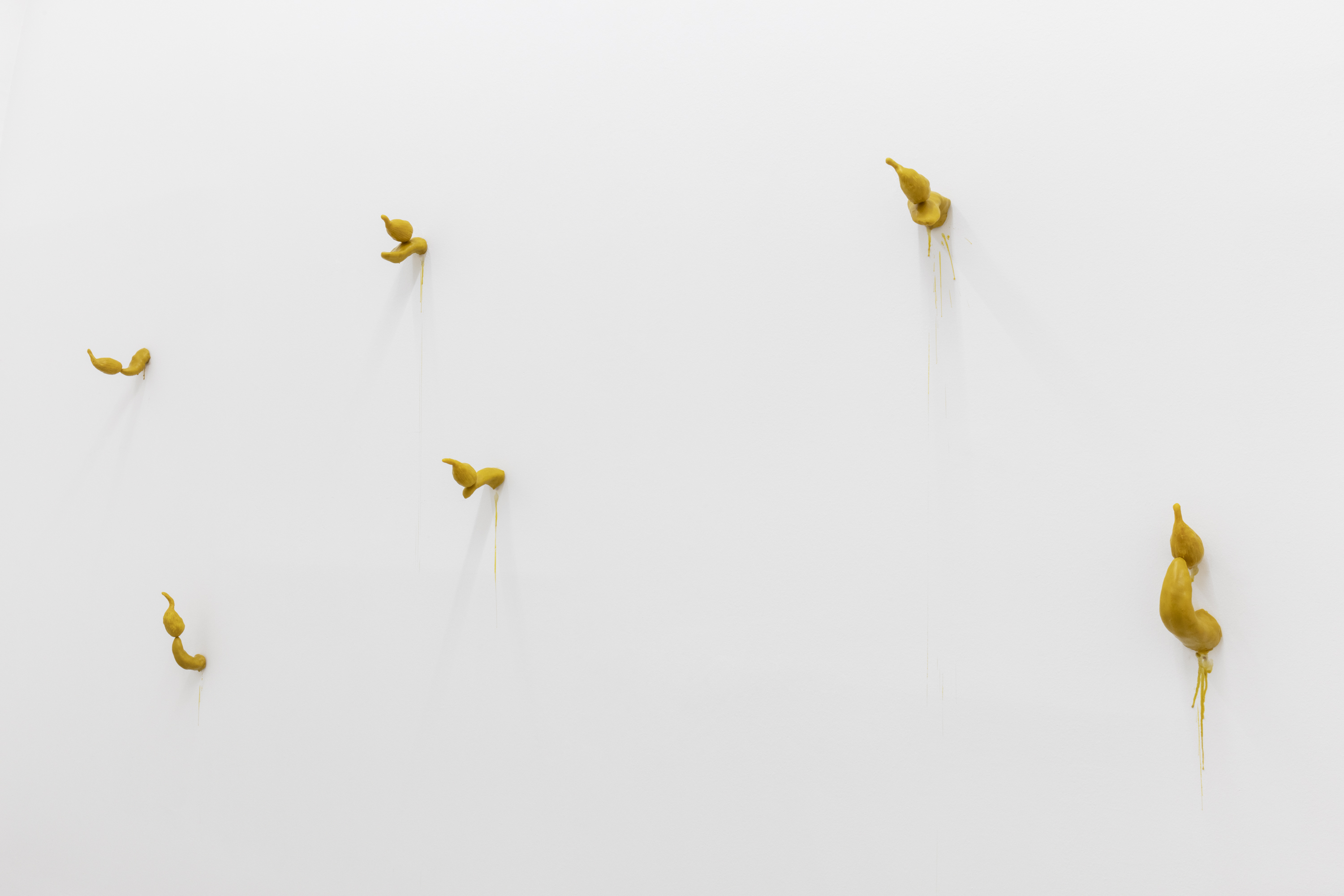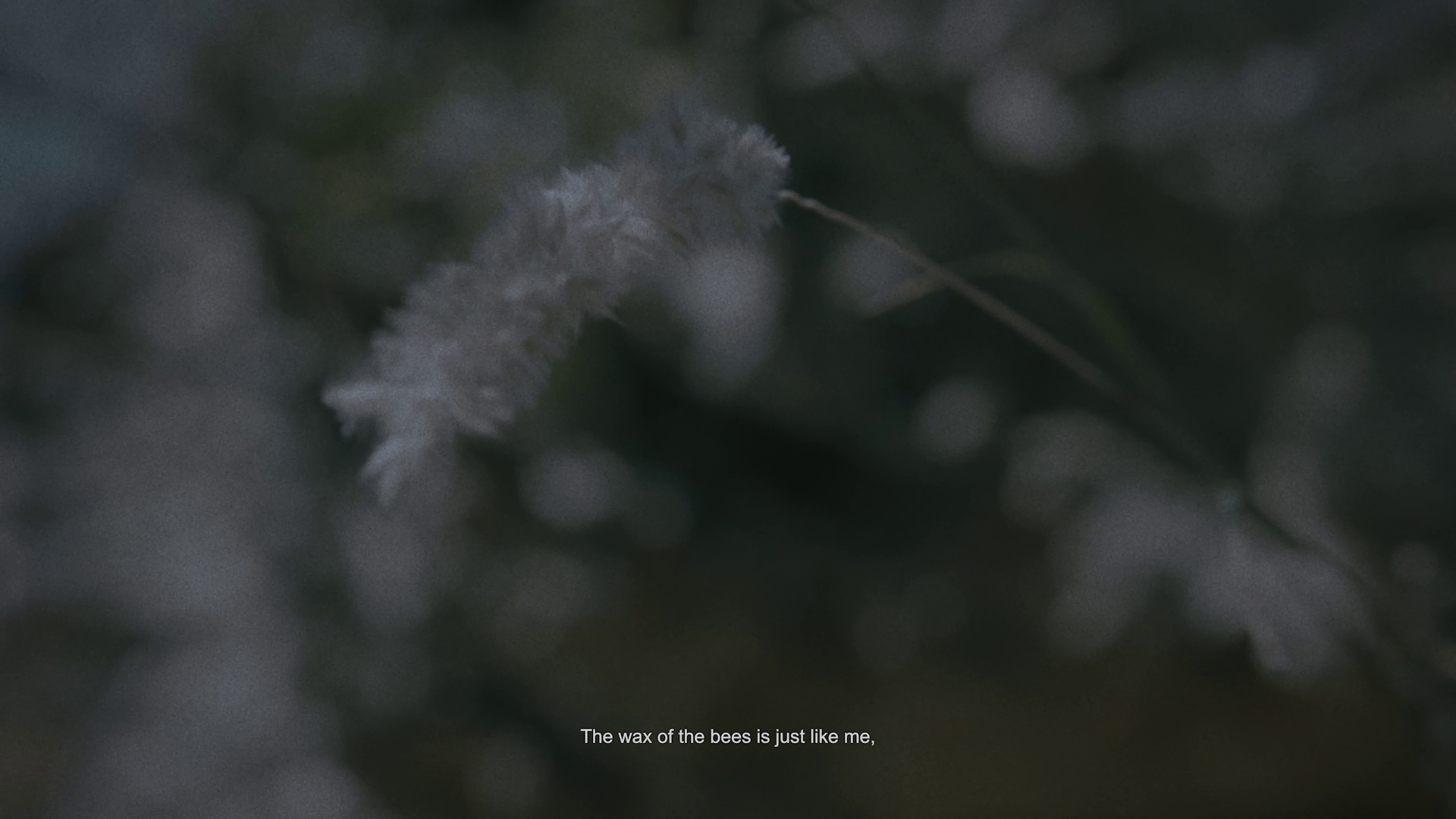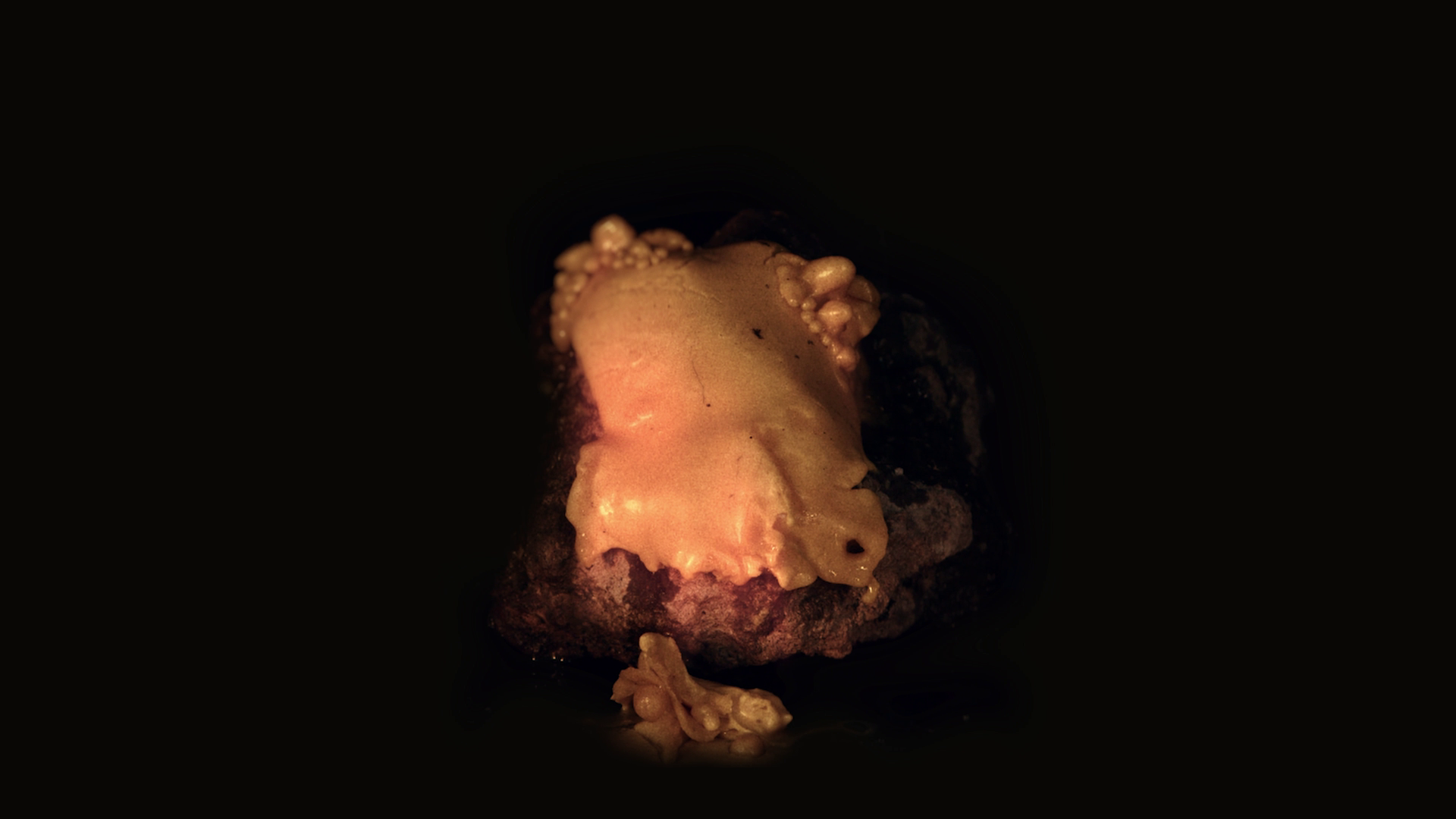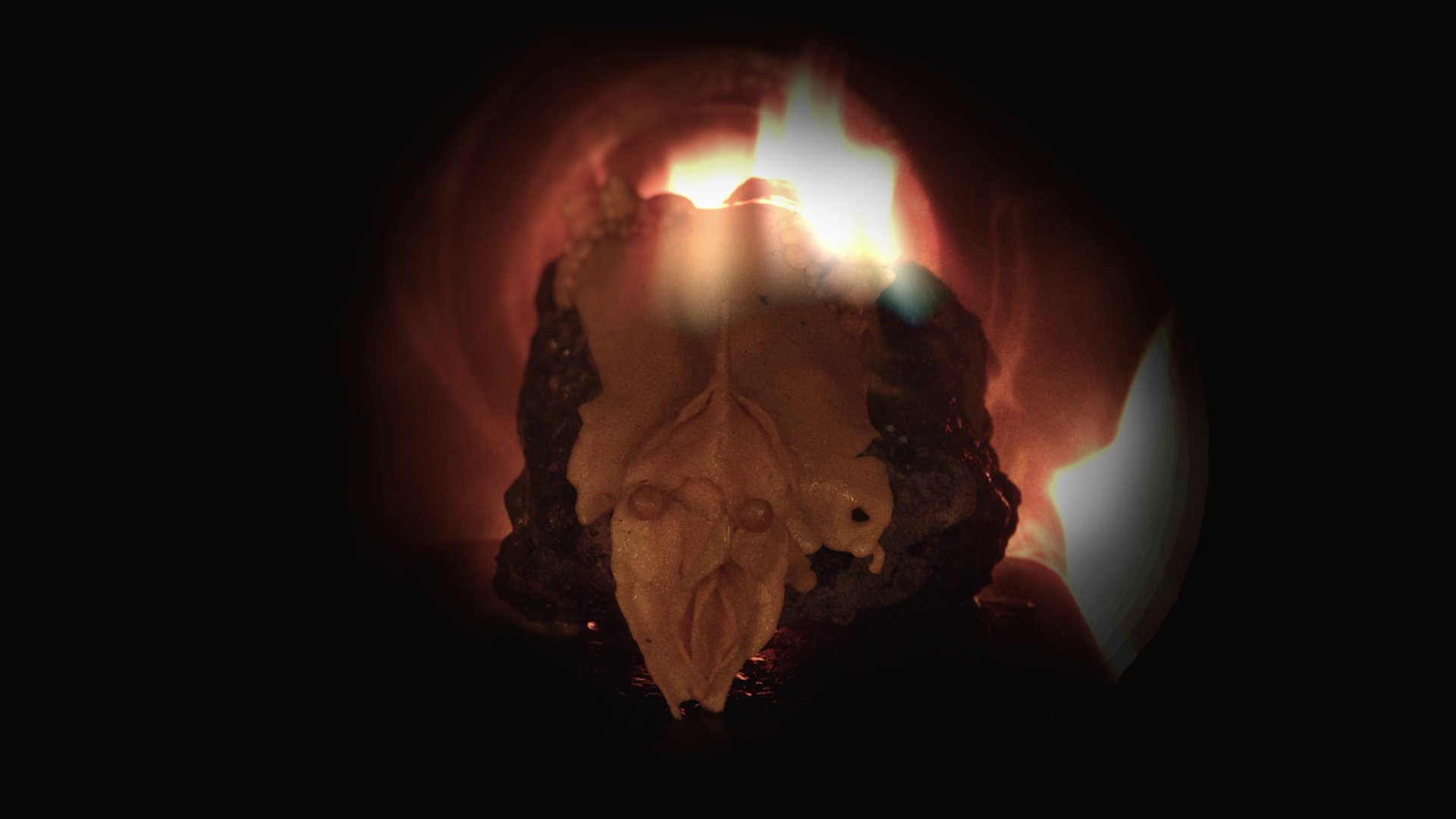gideonhorvath.com
THE FAUN’S BALL (2021)
![]()
Curator: Flóra Gadó
Consultation: Kata Dóra Kiss
Cameraman: Gergely Ofner
Sound design: Gallusz Balogh
Macrame: Zita Szabó
In his solo exhibition, Gideon Horváth experiments with the contemporary representation of the mythological figure of the faun. The faun’s persona in this interpretation is a marginalized, exiled figure because of his queerness. He lives through situations of hiding, adaptation and blending in but he also embarks on an emancipatory process to strengthen his identity. Through this persona he shows how the notions of hypersensitivity and defense can turn into a liberating power. Matters, senses, forms and figures blend together in this state of ecstasy which we can experience through the ever-changing mass of the beeswax.
For the exhibition at TIC Gallery, Gideon Horváth presents both his earlier works from this year as well as new works, and in both cases the paradoxical situation of the faun’s “realness” becomes an important element. The notion of realness becomes crucial in the new video by the artist in which he narrates the sudden and life-changing meeting with the faun. Shot in a way which resembles the so-called “american night” (scenes made in daylight with low exposure, known from hollywood films) and thus creating the atmosphere of an uncanny dawn, we see forests, rocks and cliffs: the possible dwelling and hiding places of the faun. While the artist keeps the viewer in secrecy and through the camera work we have the feeling that we are lost in the woods, a sudden recognition takes place, which is also highlighted by the presence of the mirror and other self-referential objects, like the portraits and masks in the exhibition. The narrator of the film / the artist and the faun become one entity: they were always the same, melting into each other, recognizing themselves in the eyes of the other. (“I was him and he was me”). Moreover, the poem-like text written in first person creates an intimate atmosphere which is juxtaposed with the film’s often detaching imagery and soundscape.
The other meaning of realness refers to a certain subculture which is visible for example in Jennie Livingston’s documentary, Paris is Burning (1990). Realness is a key notion in the drag balls frequented by the LGBTQ community of the 1980’s New York. It means how “real” the participants can perform the traditionally accepted heteronormative ideals of a white man or a woman. The main events in the film are these balls: where the participants can both realize their dreams as well as present an ironic and subversive representation of identity. The ecstatic and liberating state of these balls is linked to the concept of the bacchanalia, the intensified mindset in which everything melts together and which is the par excellence state of the faun. The title of the exhibition highlights the fact that now it is time for the faun to truly embrace his (un)realness and let the trance-like mood of a present-day bacchanalia take place. As the objects from the previous exhibition are also visible, we can see how the faun gradually awakens to his true self. By taking advantage of his hypersensitivity and making kin with the other living entities of his world that he feels drawn to he reaches a state of constant becoming. We can observe the phases of this evolution through the narrative presented by the different objects of the exhibition. From the first rage of the faun who is deprived of his genitals (The mutilated faun) through the figure of a more enthusiastic faun (Faun with a hard on looking into the advanced future) we arrive to him being in a sensual climax with the new piece (The faun’s ball) resembling a strange disco-ball, the sun or even a hybrid body part, with both sensual and explicit motives. We have the feeling that the exhibition space transformed into the ballroom where we arrived just after the ball took place: it's the aftermath we experience, while the objects and various recurring symbols still create an almost overwhelming and proliferating effect. This is emphasized with the unique materiality of the beeswax which represents hybridity and fluidity. The artist understands it as a special kind of queer ecological material and the exhibition itself is linked to queer theory and notably to queer ecology in several ways. The deconstruction of a binary worldview, questioning heteronormativity as a normalcy, overwriting the dichotomic worldview of nature-culture, human-nonhuman becomes crucial through the figure of the faun. The beeswax appears as a hypersensitive, constantly changing and sensual matter, which can either reveal delicate details or become uncontrollable and wild. In the exhibition thus we can see both the “origin story” of the faun and experience the liberating and ecstatic mood of the bacchanalias, closely linked to the Harlem drag balls, which could be considered as a safe-space, where finally someone could just simply exist and submerge in the party at the same time.
![]()
![]()
![]()
![]()
![]()
![]()
![]()
![]()
![]()
![]()
![]()
![]()
![]()
![]()
Photos: Eva Rybářová
